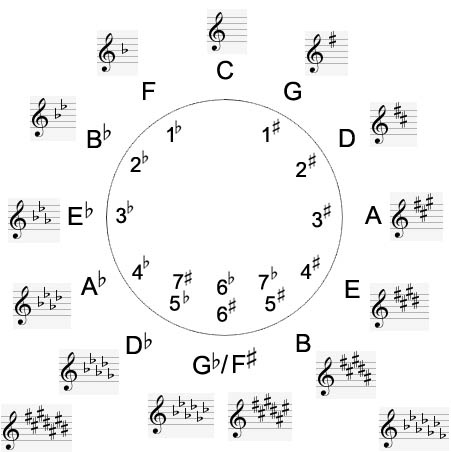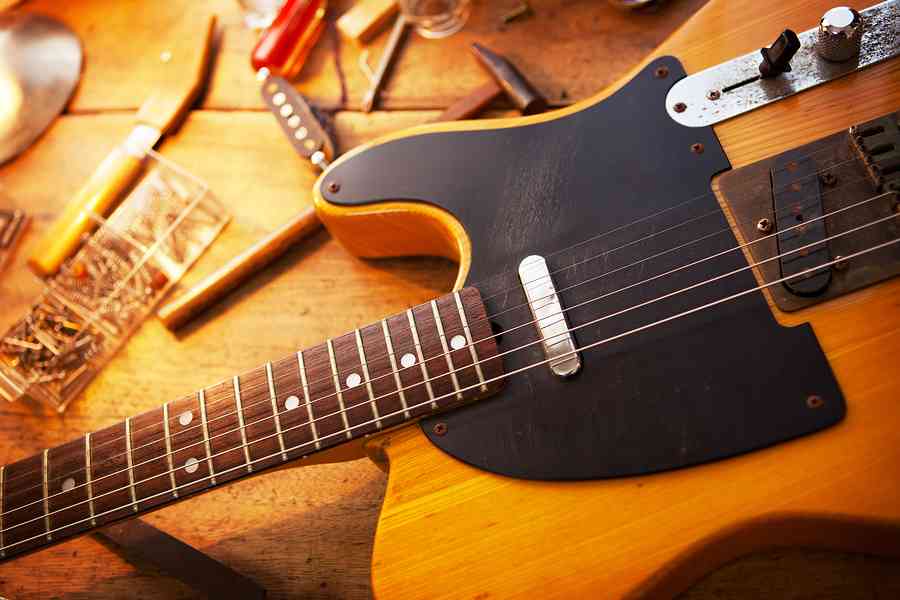
In this lesson we got a list with the best easy guitar songs for beginners that will get you started on the right track. I’ve put together a great list of simple songs to play on guitar that are great to strum and sing along with.
We got easy acoustic and electric guitar songs, basic fingerstyle tunes, riffs, and guitar intros for you. For 2024 and 2025 these are still timeless and the perfect ones to start out with. It’s all here!
How to Play Easy Songs on the Guitar
For an easy guitar song you need two, three or four basic open chords and an easy chord progression like G – C, G – C – D or Em – G – C – D. The songs have a simple rhythm and strumming pattern in 4/4, 3/4 or 2/4 time and usually played with a capo to transpose the song to the appropriate key. Finally you need a list of very easy songs to play on the guitar, that’s where this post comes in.
When you learn the songs I recommend you follow the order of the list. You can find the video lessons, chords and tabs further down this post.
Enjoy!
What are Easy Guitar Songs for Beginners?
1. A horse with no name – America
One could argue that “Horse with no name” is the easiest guitar song ever as far as guitar chords concerns with only two chords for the entire song. The chords are Em (022000) and D6-9/F# (2×0200). While the name of the second chord sounds overwhelming, it’s actually a really easy chord to play. The song also contains 2 different strumming patterns that are quite simple and straight forward. Strumming pattern #1 = ↓↓↑ (2x) Strumming pattern #2 = ↓↑ (4x)
2. I still haven’t found what I’m looking for – U2
This classic U2 ballad uses only three basic chords C, F and G. “I still haven’t found what I’m looking for” is also perfect for beginners due to it’s slow tempo. You can strum the song with a basic 4 down strums per measure which sounds perfectly fine with this song or you can try a bit more musical strumming pattern that I’ll explain in the video lesson.
3. Have you ever seen the rain – CCR
The verses for “Have you ever seen the rain” is a perfect beginner workout with only two chords for the verse C and G and it starts with four measures on C, then two measures on G, two measures on C and repeat. For the chorus they play | F | G | C | Am | (2x) | F | G | C | You can play an easy down-up-down-up-down-up-down-up strumming pattern throughout the song.
4. Sweet Caroline – Neil Diamond
Sweet Caroline is Neil Diamond’s most famous song that is really fun to play. It can be simplified without having to compromise too much. The chord progression is as follows: Verse: / A / D / A / E / Prechorus: / A / A6 / E / D / E / Chorus: / E / D / D / E (2) D ↓— The strumming pattern for the song is just simply down-down-up throughout the entire song.
5. Zombie – Cranberries
“Zombie” by the Irish rockband The Cranberries is a great easy rock song to play. It contains four super easy chords: Em – Cmaj7 – G6 – D6-9/F#.
| Em = 022000 | Cmaj7 = x32000 | G6 = 320000 | D6-9/F# = 2×0200 |
While the strumming pattern for the song is a little bit more varying it can be played with simple eight note down strums on each chord | ↓↓↓↓↓↓↓↓ | throughout the song. The chords and the strumming pattern make the song instantly recognizable. Try it and you’ll see.
6. Dreams – Fleetwoodmac
The legendary “Dreams” from Fleetwoodmac sang by Stevie Nicks is a beautiful song with only two chords Fmaj7 and Gmaj6 following with a simple chord progression playing one measure for each chord throughout the song: | Fmaj7 = xx3210 | Gmaj6 = 320000 | or play the Gmaj6 by moving the Fmaj7 chord up to the third fret | Gmaj6 = xx5430 | For the strumming pattern can play down-up-down-up-down-up-down-up ↓↑↓↑↓↑↓↑ Practice thoroughly on the chord-changes and you’ve got a great beginner song.
7. Three little birds – Bob Marley
“Three Little Birds” is a song by Bob Marley and The Wailers. This song is a real classic and contains 3 easy open chords A – D – E. In the chorus only the chords A and D are played and the E major chord is added to the verse. The strumming pattern is a reggae beat that means you play four down strums on the after beat for each measure / bar. Count 1 and play the down strum, count 2 and down strum and so on. 1 ↓ 2 ↓ 3 ↓ 4 ↓
8. Love me do – The Beatles
There is no easy guitar song list complete without a Beatles song. “Love me do” was their official debut single and was released in October 1962. This song can be played with three chords G – C – D and you can add a G7 chord if you want to get fancy. The strumming pattern is a basic 4/4 strumming pattern: down-down-up-up-down-up ↓↓↑↑↓↑.
9. Stand by me – Ben E King
“Stand by me” by me, one of the most famous songs ever covered by many artists from every generation that followed, is always on the top 10 list of easy guitar songs. The chords for the song are G – Em – C – D, also referred to as the I – VI – IV – V chord progression, which is a very common chord structure for many popular 4 chord songs. The strumming pattern for the song is down-slap-down-slap ↓-x-↓-x
10. Knocking on heavens door – Bob Dylan
Bob Dylan’s classic “Knocking on heavens door” has become an easy rock song due to the cover version of Guns ‘n Roses. The chord progression for the song is | G D | Am | G D | C | and can be simplified by just playing two down strokes on G and D and four down strokes on Am and C.
Check out the Songs List Categories below or scroll right to the Easy Beginner Guitar Songs via the green button:
Easy Guitar Songs List Categories.
Continue Reading
 The circle (or cycle) of fifths, also called the cycle of fourths is a diagram that gives all kind of handy information on key signatures, chords and scales in a quick and clear manner.
The circle (or cycle) of fifths, also called the cycle of fourths is a diagram that gives all kind of handy information on key signatures, chords and scales in a quick and clear manner.